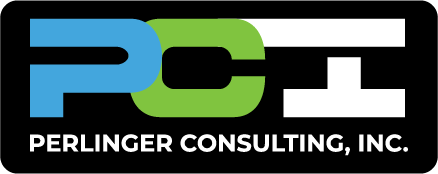Boost Your Bottom Line with Operating Leverage

The Nuts and Bolts of Operating Leverage
Let’s unravel Operating Leverage, a concept that’s not just about numbers but about understanding the heartbeat of your business. When we talk about fixed costs, think about those expenses that stay constant – like your monthly rent or salaried employees. Variable costs, on the other hand, concern your business activities – think materials you buy to make your products or commission-based salaries. Learn how to Boost Your Bottom Line with Operating Leverage!
Operating Leverage: The Double-Edged Sword
Operating Leverage is a bit of a double-edged sword. With high operating leverage, your profit margins can soar with increased sales, but there’s a catch – it also means you’re more vulnerable during slow periods. Imagine, if sales dip, you’re still covering those fixed costs, right? It’s like having a sports car – amazing when you’re zooming on the open road (during high sales), but it can be a bit much to handle in city traffic (low sales periods).
Operating Leverage and Break-Even Points
Diving deeper, let’s talk about break-even points. This is the point where your total revenues exactly match your total costs – no profit, no loss. Businesses with high operating leverage generally have a higher break-even point because of their larger fixed costs. But once they cross this point, profits can skyrocket. Understanding where your break-even point lies is crucial in making informed operational and investment decisions.
The Role of Operating Leverage in Risk Management
Risk management – it sounds daunting, but it’s all about making friends with uncertainty. High operating leverage implies higher business risk, especially in fluctuating markets. By understanding this, you can tailor your business strategies for risk mitigation, like diversifying your product line or exploring new markets to stabilize sales.
Strategic Pricing and Operating Leverage
Let’s not forget about pricing strategies. Your pricing needs to reflect not just the value you provide but also your cost structure. High operating leverage might mean you can afford to price competitively, knowing that each sale contributes significantly to covering your fixed costs and then boosting profits.
Operating Leverage in Different Business Models
It’s fascinating to see how operating leverage plays out across different industries. For instance, a software company might have high operating leverage due to heavy upfront development costs (fixed costs), but once their product is developed, the cost of selling one more license is relatively low. Contrast this with a consulting firm, where costs largely vary with the number of clients (variable costs).
Leveraging Technology for Operating Leverage
In this digital age, technology can be a game-changer in managing operating leverage. Automation tools can convert what were variable costs into fixed costs, bringing more predictability into your business model. For example, investing in an automated accounting system might increase your fixed costs, but it can reduce variable costs like manual accounting labor and improve efficiency.

Case Study: Operating Leverage in Action
Let’s look at a real-life scenario. Consider a bakery that decided to invest in automated baking equipment – a hike in fixed costs but a reduction in variable labor costs. Post-investment, their operating leverage increased, meaning that each additional pastry sold contributed more significantly to the bottom line, accelerating profit growth as sales increased.
Measuring Your Operating Leverage
To harness its full potential, we use a metric known as the Degree of Operating Leverage (DOL). This powerful tool quantifies how a change in sales volume can impact your operating income. A higher DOL indicates a significant impact, making it an essential metric for small business accounting and bookkeeping.
The Interplay of Operating Leverage with Other Financial Metrics
But operating leverage doesn’t exist in isolation. It works in tandem with other financial metrics to provide a comprehensive view of your business’s financial health. For instance, integrating operating leverage insights with liquidity ratios and capital budgeting techniques can enhance your decision-making process, particularly in small business bookkeeping services.
Understanding the synergy between operating leverage and liquidity ratios, like the Quick Ratio or Cash Ratio, is vital. This understanding helps you maintain the delicate balance between investing in growth and maintaining enough liquidity to cover short-term obligations.
Leveraging Technology in Operating Leverage Analysis
In the age of digital transformation, leveraging technology for financial analysis is no longer optional. It’s essential. Tools like automated accounting systems and advanced bookkeeping software not only streamline your accounting processes but also provide valuable insights into your operating leverage. As a QuickBooks consultant, we often see the transformative impact of integrating technology in small business accounting services. These tools enable more accurate, timely, and efficient handling of financial data, critical for analyzing operating leverage.
Operating Leverage and Tax Planning
Another aspect where operating leverage plays a crucial role is in tax planning. By understanding how your mix of fixed and variable costs impacts your profitability, you can make more informed decisions regarding tax liabilities. Accurate accounting services, like those offered at Perlinger Consulting, can help you strategically time your expenses and investments to optimize your tax benefits.
Customizing Operating Leverage Strategies for Various Business Models
Every business is unique, and so should be the approach to operating leverage. For example, a business focused on QuickBooks bookkeeping might have different leverage considerations compared to a firm specializing in accounts payable automation solutions. Understanding the nuances of operating leverage in your specific industry is crucial. It’s not just about following a set formula; it’s about adapting the principles to fit your unique business model and goals.
Case Studies and Real-World Applications
To bring this concept to life, let’s look at a couple of case studies. Imagine a small business specializing in online bookkeeping services for small business. By moving to a cloud-based accounting solution, they shift a significant portion of their costs from variable to fixed, thereby increasing their operating leverage. This shift allows them to scale their customer base without a proportional increase in costs.
On the other hand, consider a company offering accounts receivable automation. By automating this process, they reduce their variable costs associated with manual labor, increasing their operating leverage and allowing for greater profit margins as sales increase.
Final Thoughts: Empowering Your Business Decisions
So, there you have it – a deeper dive into Operating Leverage. It’s not just about crunching numbers; it’s about painting a vivid picture of your business’s financial health and potential. Whether you’re a startup owner tinkering in your garage or running a family business passed down through generations, understanding and applying operating leverage principles can make a world of difference in your strategic decision-making.
Remember, at Perlinger Consulting, we’re all about turning complex concepts into actionable insights for your business. Operating Leverage is just one piece of the puzzle, but it’s a powerful one.
Ready to explore the dynamic world of operating leverage and propel your business forward? Reach out to us, and let’s chart a course towards financial mastery and business excellence together!
This article is meant for educational purposes only. Articles contain general information about accounting and tax matters and is not tax advice and should not be treated as such. Do not rely on this information as an alternative to seeking assistance from a certified accountant/tax professional. Perlinger Consulting partners with certified tax professionals to assist our clients.
